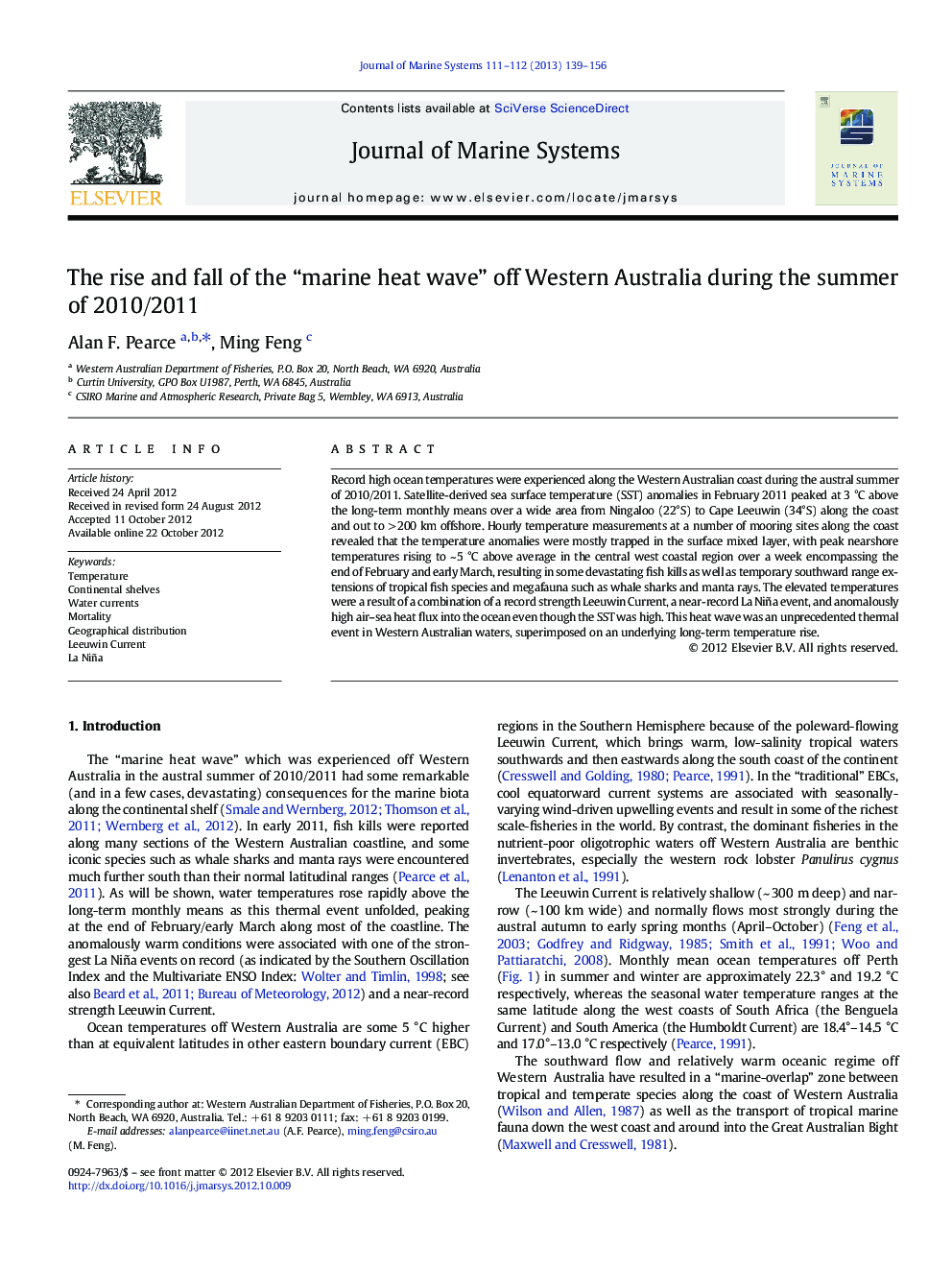| Article ID | Journal | Published Year | Pages | File Type |
|---|---|---|---|---|
| 4548177 | Journal of Marine Systems | 2013 | 18 Pages |
Record high ocean temperatures were experienced along the Western Australian coast during the austral summer of 2010/2011. Satellite-derived sea surface temperature (SST) anomalies in February 2011 peaked at 3 °C above the long-term monthly means over a wide area from Ningaloo (22°S) to Cape Leeuwin (34°S) along the coast and out to > 200 km offshore. Hourly temperature measurements at a number of mooring sites along the coast revealed that the temperature anomalies were mostly trapped in the surface mixed layer, with peak nearshore temperatures rising to ~ 5 °C above average in the central west coastal region over a week encompassing the end of February and early March, resulting in some devastating fish kills as well as temporary southward range extensions of tropical fish species and megafauna such as whale sharks and manta rays. The elevated temperatures were a result of a combination of a record strength Leeuwin Current, a near-record La Niña event, and anomalously high air–sea heat flux into the ocean even though the SST was high. This heat wave was an unprecedented thermal event in Western Australian waters, superimposed on an underlying long-term temperature rise.
► Unprecedented warming along the W. Australian continental shelf in summer 2010–2011 ► Associated with a near-record La Niña event and a record strength Leeuwin Current ► Combination of Leeuwin Current advection and atmosphere–ocean heat flux ► Devastating mortality of some fish and invertebrate species ► Temporary range extensions of some megafauna and other tropical species.
